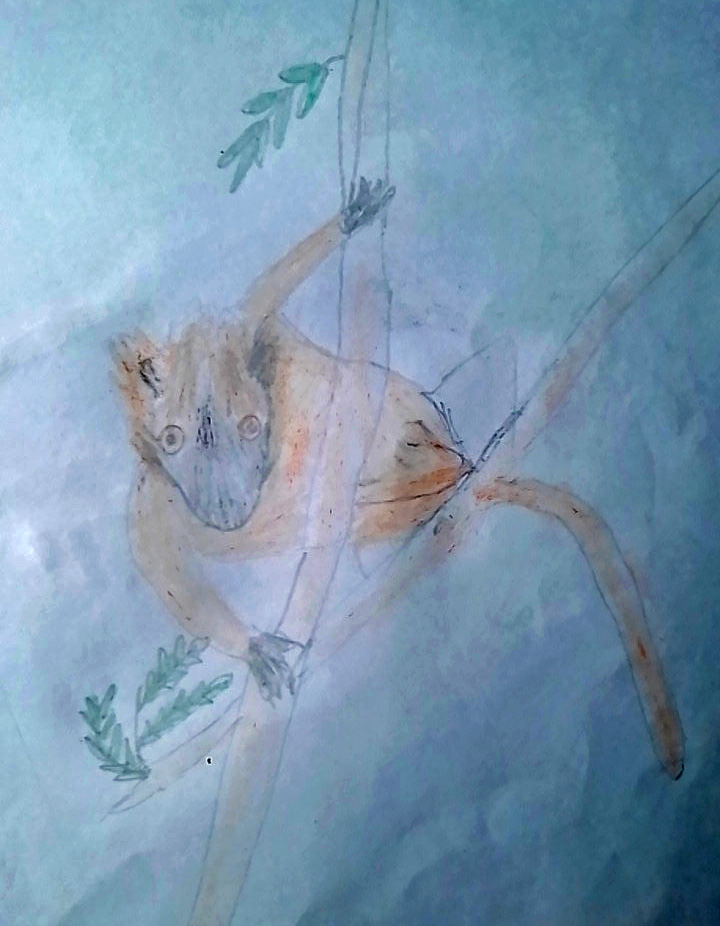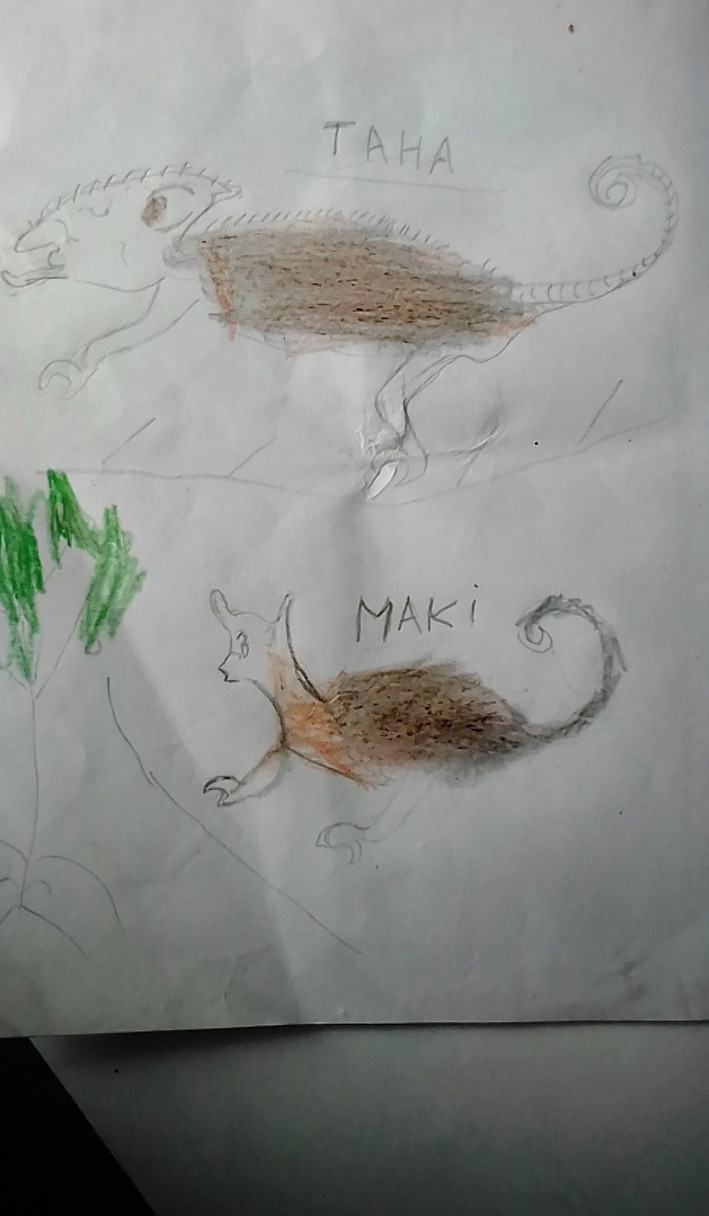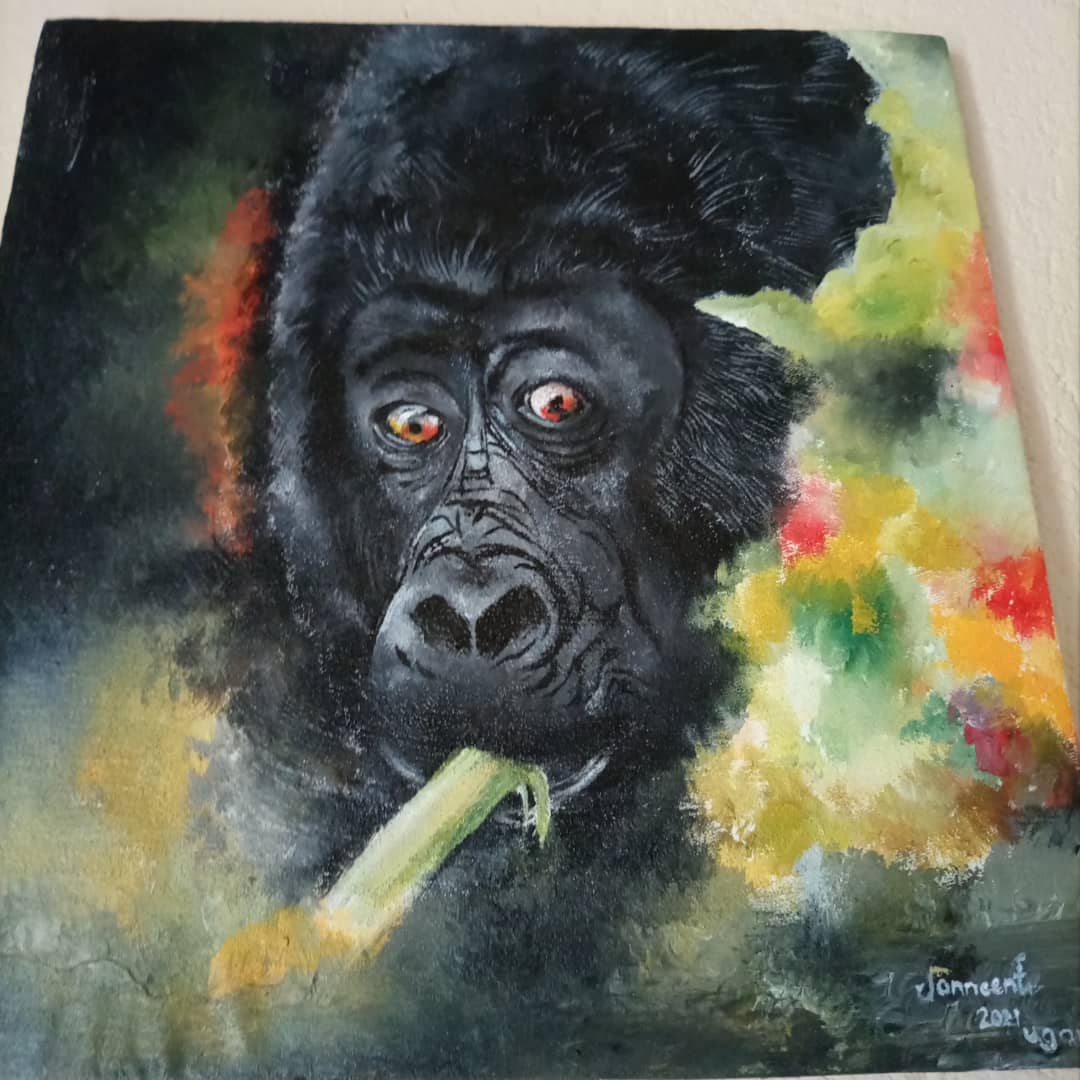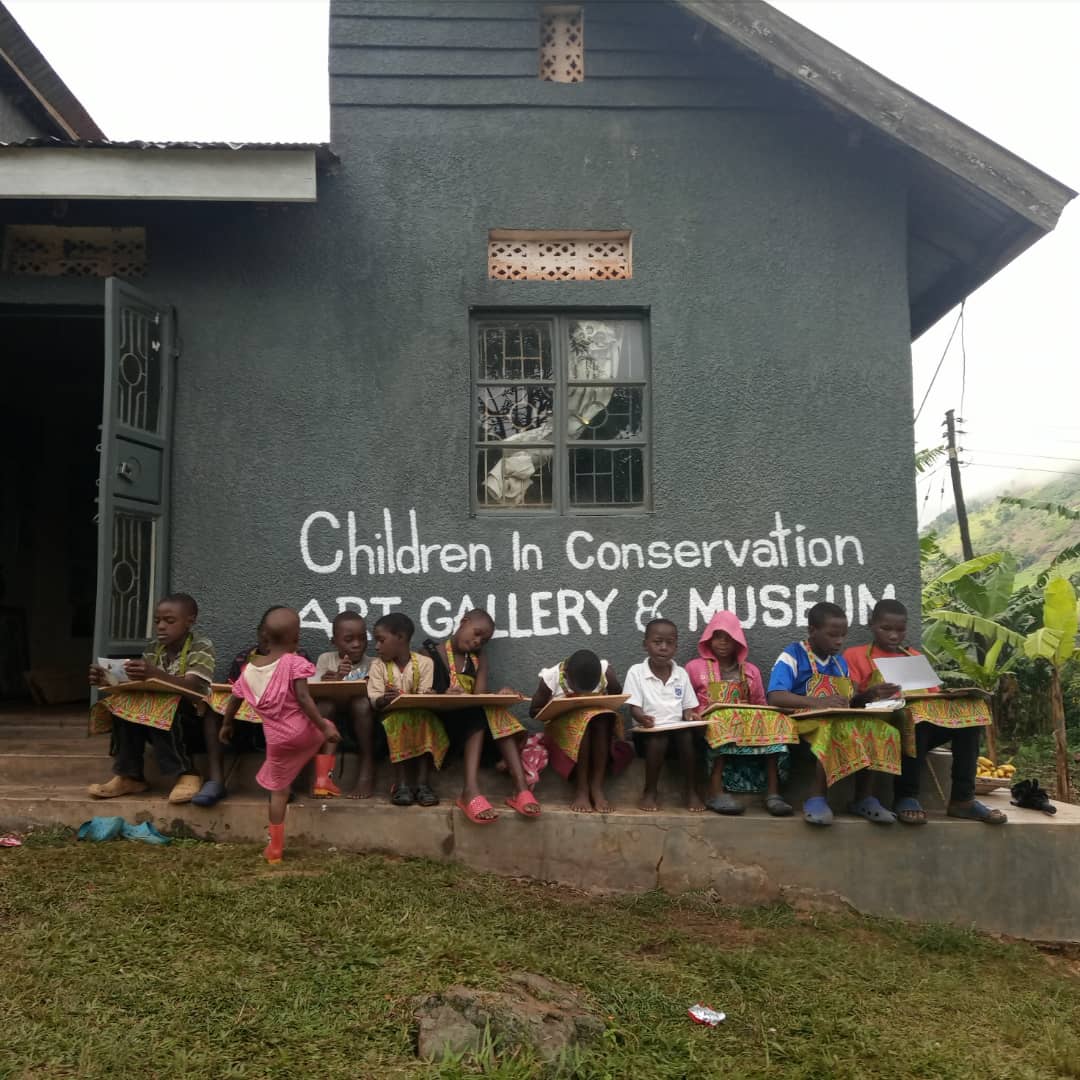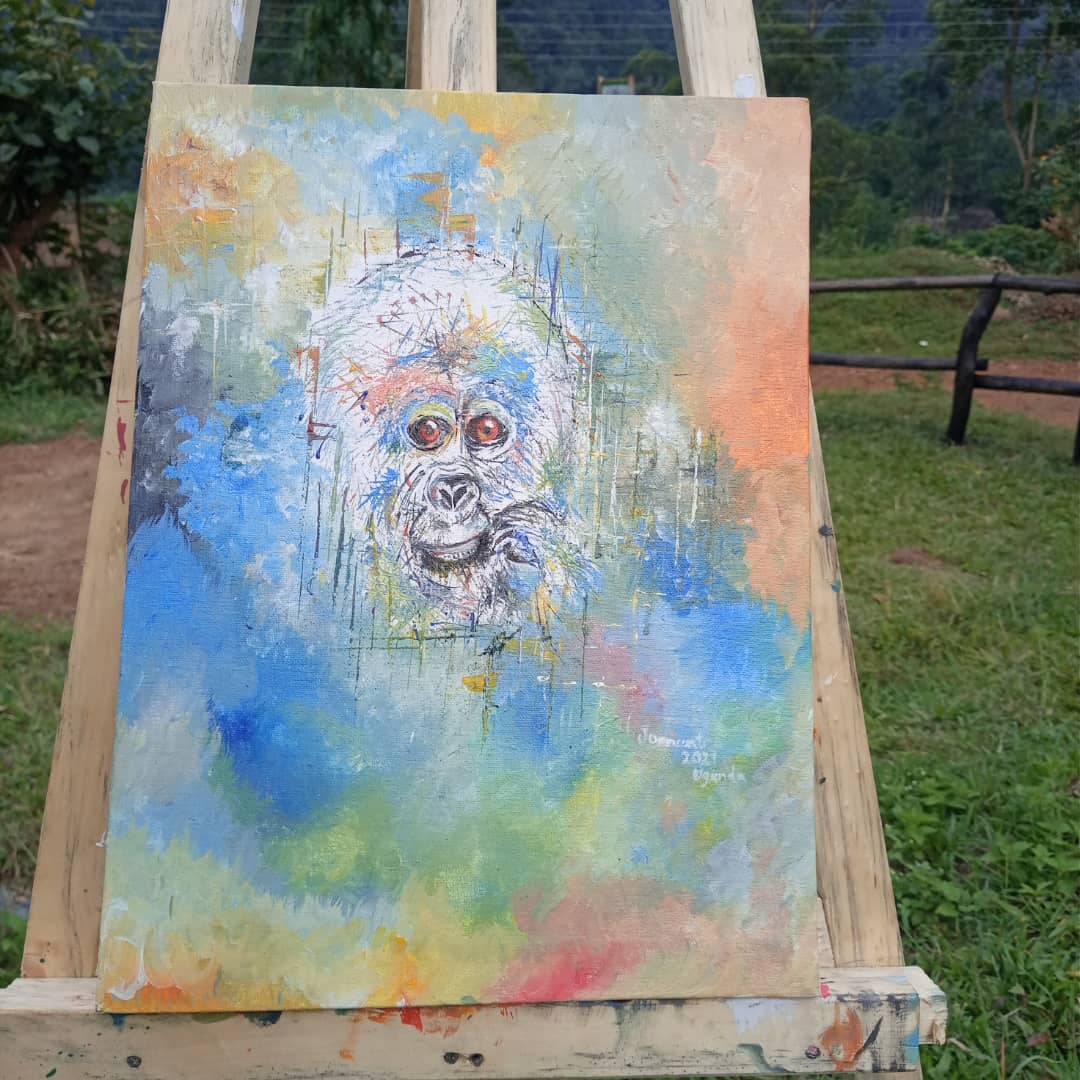Welcome to WordPress. This is your first post. Edit or delete it, then start writing!
Engaging Children with Endangered Primates in Panama
Endangered Azuero howler monkeys, tadpoles, bats, birds, insects, and beautiful wildlife, all in the school yard
April 2022. Headed to the airport after more than 2 years of pandemic restrictions was an exciting change. Finally, an opportunity to work with children again on conservation in primate-habitat communities!
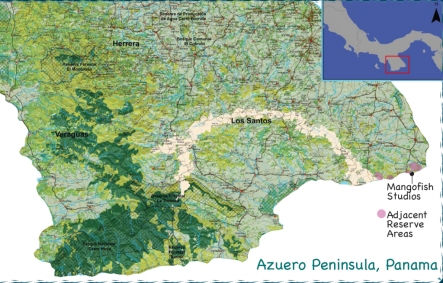
Landing in Panama City, we drove SW down the Azuero Peninsula to arrive in Los Santos district on the land tip that reaches into the Pacific Ocean. This area is home to a number of reserves, both private and national. There is a deep network of conservationists working to reforest great corridors of traditional ranch lands to restore the connection between these forested areas and protect the vulnerable biodiversity within.
Living in these remaining pockets of forest are 3 species of primates –
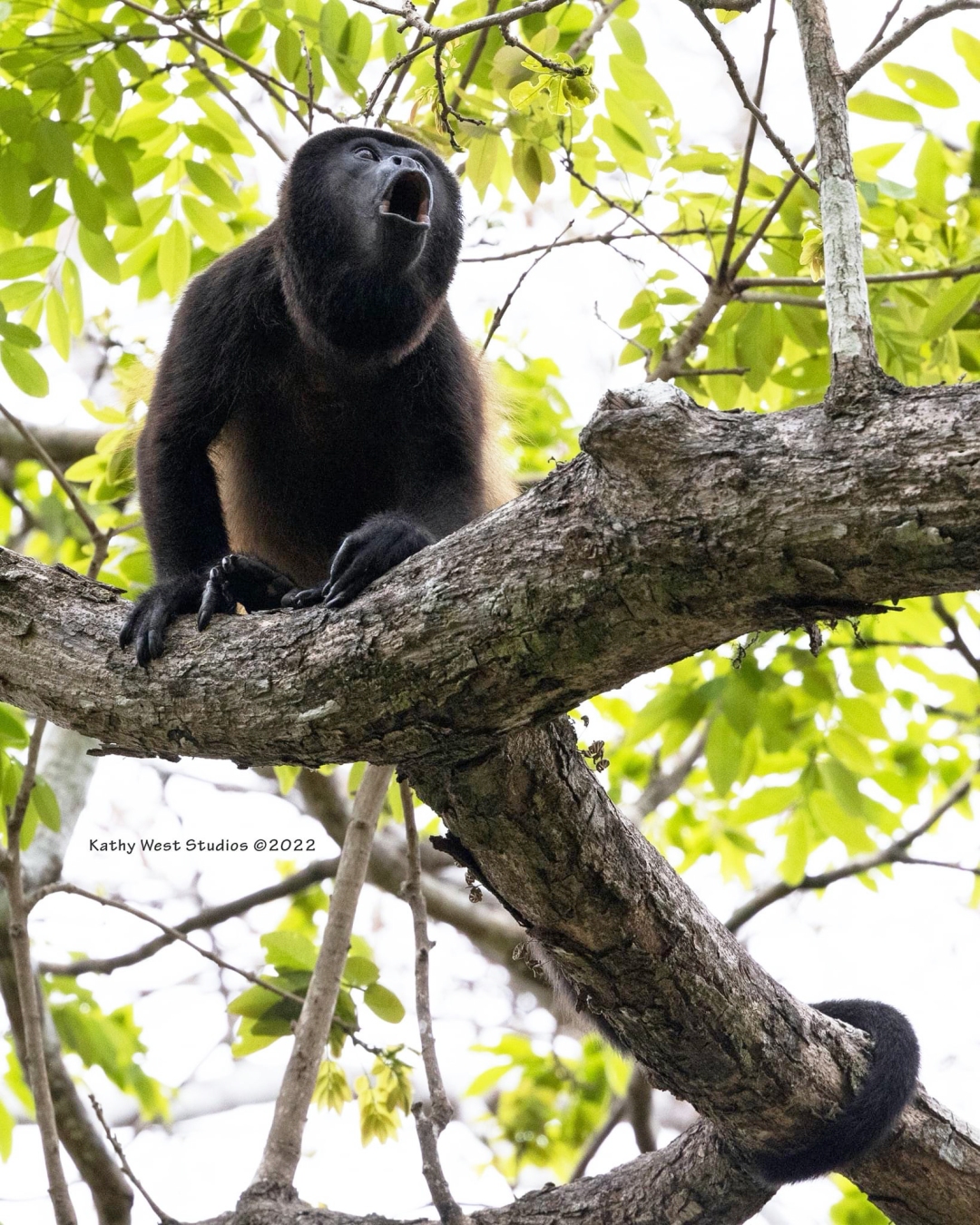
The Panamanian White-throated capuchin (Cebus imitator) (IUCN threatened and decreasing);
The Azuero howler monkey (Alouatta palliata ssp. trabeata) (IUCN endangered and decreasing) (pictured here, PC: Kathy West)
The Azuero spider monkey (Ateles geoffroyi ssp. azuerensis) (IUCN critically endangered) with only an estimated 170 individuals remaining (unofficial, personal communication with local conservation organization conducting recent surveys).
In Panama, our PICC team members Stuart Hooper and Tammy Rowe at Mangofish Studios (Los Panamaes, Azuero peninsula) helped us to make arrangements with 2 schools in the area. Fifteen elementary-aged children at a small, rural school in Cañas were our first PICC program in Panama.
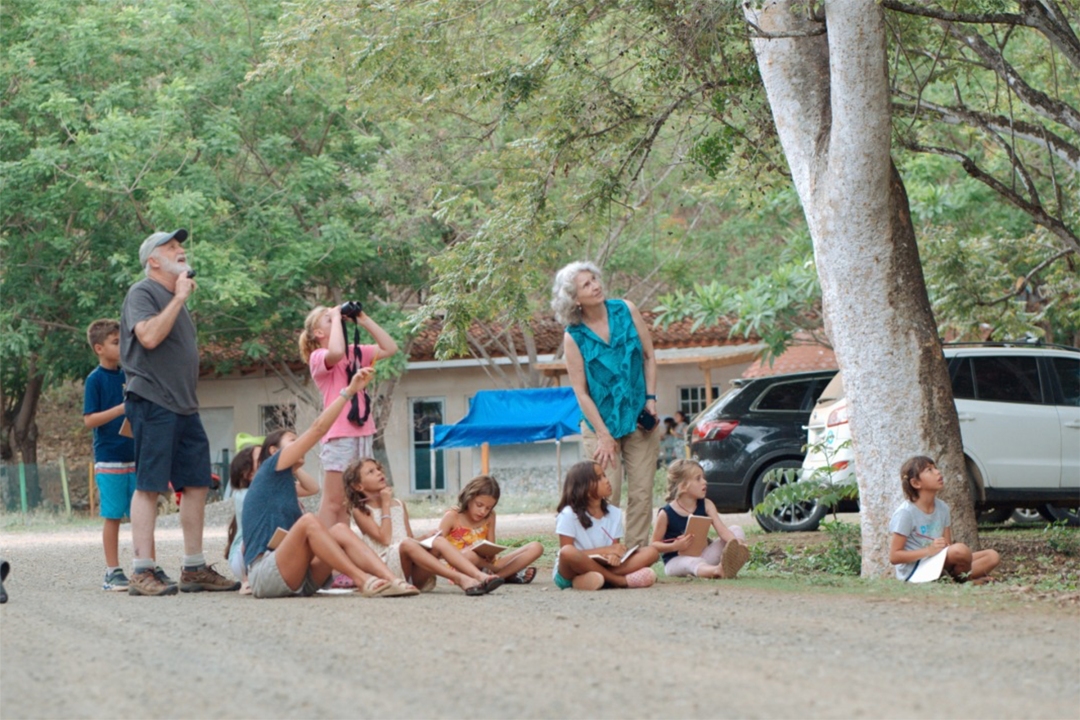

The students learned scientific journaling the first day, and practiced on a thrush’s nest in the eves of the school building, tadpoles at the base of the waterfalls, beautiful white-lined bats in the tower, and Azuero howler monkey families in the huge trees. A little excitement happened when we were busy watching the monkeys overhead and a semi-wild horse came galloping down the road! The students took it in stride like it must happen often and we went on watching the monkeys.
On the second day, we came equipped with a suitcase full of DSLR Canon cameras with zoom lenses. After an introduction on taking photographs and how to handle the camera, the students took turns excitedly exploring the school’s forest with an eye towards discovery and making images. The monkeys were quite cooperative and spent their morning playing, napping and nursing, captured all on the cameras by the children.
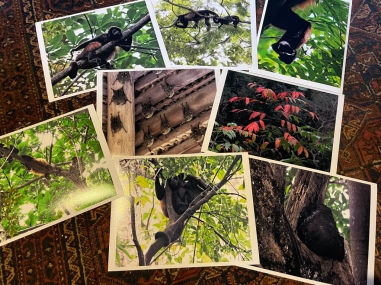
This quick trip to launch the PICC program in Panama was promising. We’ve barely dipped our toe in the pool of students living alongside these endangered primates, but we have plans to return to the area next year and include many more schools, students, teachers and parents. We also made connections and held a morning program with a group of young children in Pedasi, with plans to go back in 2023 and work with more children in this school. A very exciting connection was made with the conservation group Pro Ecologica Azuero and we are scheduled to return and do a photography program with their conservation club students in early 2023.
“The kids had so much fun and learned a lot. Thanks again for this special project. Looking forward to next year!” Mandy, 2nd grade teacher
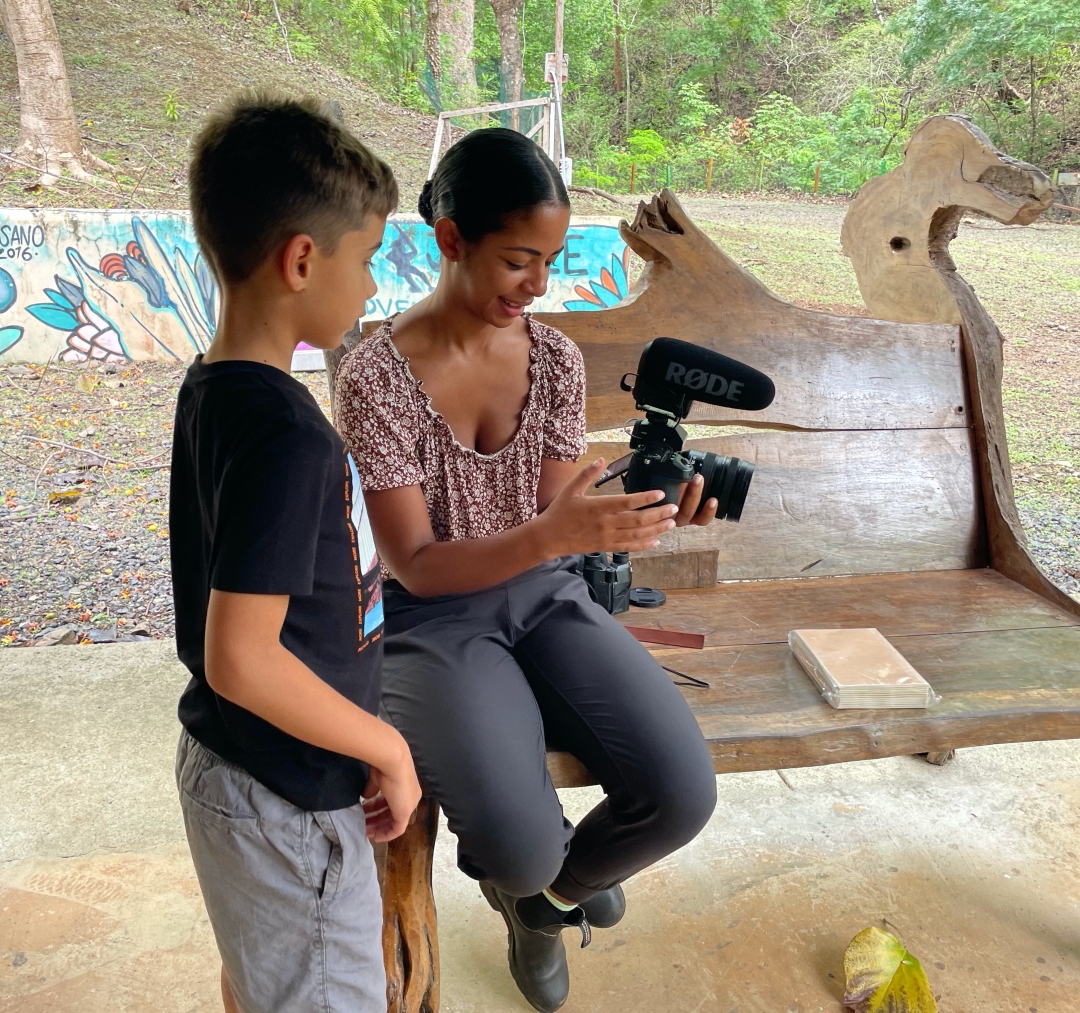
Tammy had an extraordinary talent for organizing and directing the children, while simultaneously filming the event. Each child in her group was able to take photos of all of the unique ecosystems we were looking at— forest monkeys and birds, bats, and tadpoles and other animals in the stream.
Special thanks to Stuart Hooper, Tammy Rowe, and Ed West for the program assistance, and Mangofish Studios for hosting us.
Thank you to teachers Mandy and Kelly, and school administrator Aya, for their assistance in making this PICC program a success!
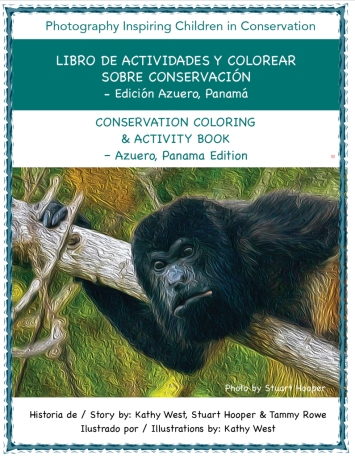
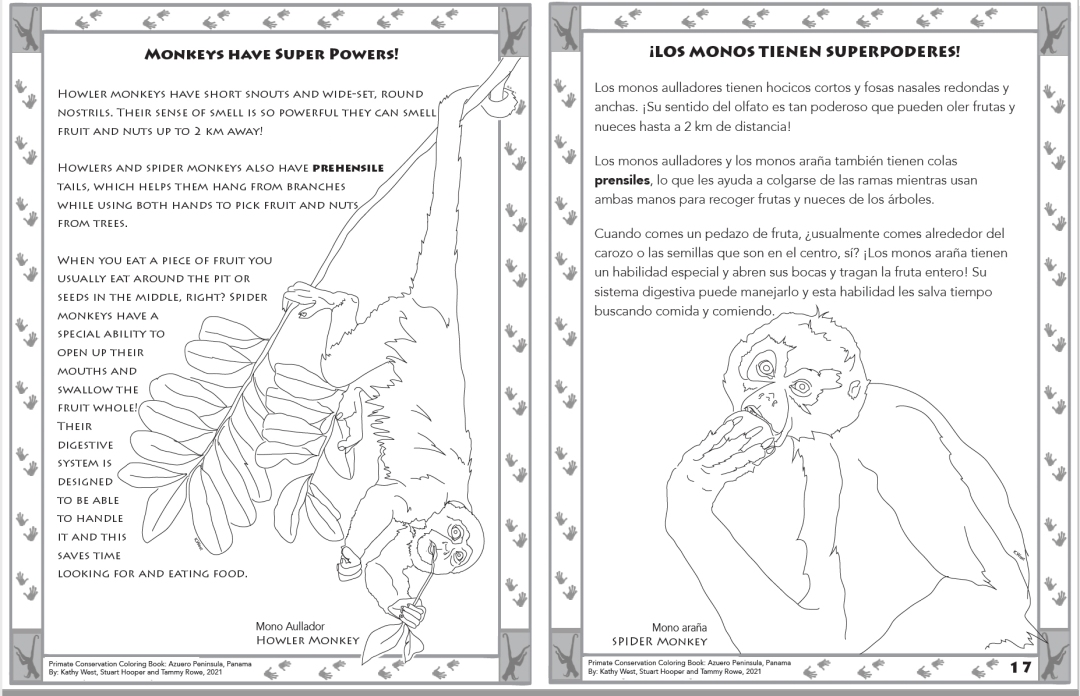
For more information about the Azuero howler monkey see: IUCNredlist.
New Conservation Partners & Opportunities for Primate Conservation!
This last year has been challenging in so many ways for all of us, and yet it was also a year of expanding opportunities in primate conservation and education outreach.
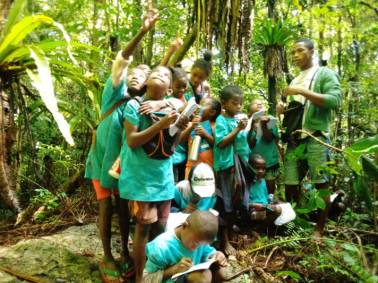
For the PICC program in Madagascar we have developed a creative solution to closed borders which kept us at home but still allowed us to support our Malagasy staff with a teaching salary and funds for materials for the children in the Masoala peninsula villages. We truly appreciate the teaching skills and passion for education of Pascal Elison (PICC team) and the way he has stepped in to fill this very important leadership role. Pascal has led four mini-PICC sessions and has ignited a love of lemurs and the forests in many children living adjacent to the rainforests. Local teachers and village elders have been included in these programs and other villages are lining up for their turn, building sustainable capacity. Read about three of the programs here and here.
One benefit of spending a lot of time on lockdown in Zoom and WhatsApp calls was the amazing connections we built with like-minded folks around the world to develop a growing number of collaborations. From children’s conservation programs in Kenya, to chimpanzees in Uganda, and mountain gorillas in the Bwindi Impenetrable National Park, our plans to educate and engage children with the PICC program are blossoming. Once we can safely travel again without endangering the indigenous populations or the wild primates, we are excited to conduct the full PICC curriculum with our team and local communities in these critical primate habitats.
Our goal is to excite, engage and educate the children, build sustainable conservation capacity in communities, and develop a new generation of conservation leaders in primate habitat countries.
UGANDA. Rafiki-– this new community program just outside of Bwindi Impenetrable National Park is using art as a means of engaging children with mountain gorilla conservation issues. A gorilla conservation coloring book is under development and the logistics are in place to conduct a 2-week PICC program with the international PICC team, local teachers and community leaders.
KENYA. TonyWild-– The PICC team is collaborating on a diversity of projects with Anthony Ochieng’ at TonyWild (Nairobi, Kenya). Plans have been developed to conduct PICC sessions with children for endangered species in Kenya, communities in Western Uganda chimpanzee habitats, and conservation photography workshops.
PANAMA. A number of highly endangered primates live in the reserves on the Azuero Peninsula, and plans have been initiated for conducting PICC sessions with local children, teachers and communities. There has been a new interest from the local people in protecting these critical biodiversity hotspots and enthusiasm for developing more sustainable lifestyles.
All of these projects are ready to launch, as soon as the pandemic and funding allows. We are a 501c3; 100% of donations go to supporting these programs and are tax deductible in the US. We are looking for funding partners to help us realize the potential of educating these children. Join us!
“PICC not only empowers the international community to care about lemurs, they empower local communities to save them.”
Cortni Borgerson, anthropologist, conservation biologist, and National Geographic explorer and expert working on sustainable hunting & food security in Madagascar
Teaching lemur biology and conservation to Malagasy students
February & April 2021, Ambodiforaha & Marofototra, Masoala peninsula, Madagascar
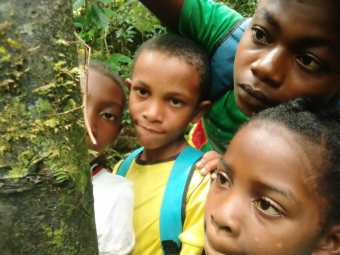
Returning to eager children and heavy rains in the village of Ambodiforaha, PICC teacher Pascal Elison came prepared with new learning materials and notebooks for the students that had participated in the July 2020 mini-PICC session.
The focus of this new session was conservation issues; how the students can help the lemurs, and how the lemurs help their families. The time was divided between the classroom (during the heaviest rains) and hikes through the Masoala forest, both during the day and at night (the children’s favorite!).
The many days of heavy rain provided Pascal with an opportunity to gather the students indoors at their school and lead them in conservation lessons using the Lemur Conservation Coloring and Activity Book: Masoala edition. The students are becoming expert artists through careful observation of Pascal’s guide books and by learning how to create realistic colors through combining and layering their colored pencils to accurately portray the lemurs and other forest animals and plants.
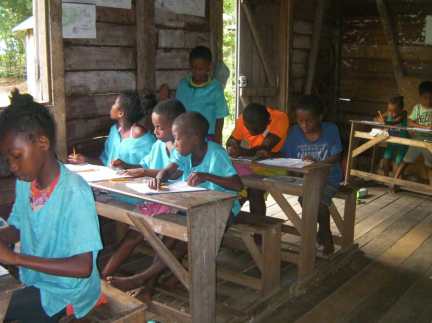
Pascal led the youngest group of students (4-8 years old) in the forest to learn how to find, identify, and draw the animals and plants, making detailed notes in their notebooks (before those pages got too soggy in the heavy rains). He focused his lessons on how the plants and animals are important to not only the lemurs but also to their families. Over the two PICC sessions, the children have become quite knowledgable about lemur behavior, foraging, habitat needs, and conservation issues.
In Pascal’s own words, the children had amazing experiences getting to know more about the lemurs and the forest. “All of the students walked to another site of primary rainforest call Lohatrozona… Sometimes we stop to explain about the tree how the lemurs to eat and which season blossoms and fruits and then draw the plants and animals such as frogs, millipedes, antlions, geckos, and so on. I know where the lemur’s territory is in that place 6 months ago and the same students went there. We check most of the territory but saw none. At 1:30 we find one red ruffed lemur set on the canopy to keep guard the fruits on their territory, so every kids watch and look at exactly their colors (black face, chestnut, forearm and tail; white neck, red ruffed and body), unfortunately we cannot draw that lemur because it have very heavy rain to broken most of notebook and sketching of the kids. And then we go home for lunch.”
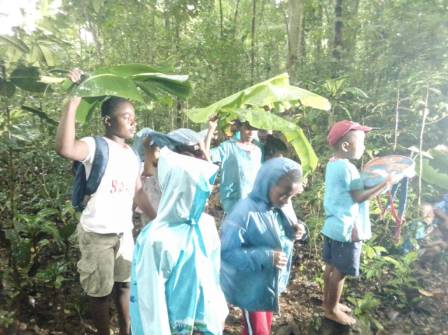
During the day walks, Pascal led the children slowly and took advantage of lessons along the way. He taught them scientific facts of the forest but also shared traditional Malagasy tales of the chameleon, bush pig, and kingfisher, and also had students contributing their knowledge of these tales as they had learned them.
As they explored, opportunities came up to be aware of the details above, around and below themselves, and to engage with even the littlest details. When they saw a tiny leaf chameleon on the ground they learned not only to step carefully, but had an opportunity to see it up close and sit down to make an accurate sketch.
Reinforcing the concept that lemurs have behaviors and needs similar to our own, Pascal found white-fronted brown lemurs and red-ruffed lemurs in same tree, sharing the ripened fruit. He had the students watch the lemurs and noted “even though it’s very high it’s very funny to watch because four red-ruffed lemurs take a nap time, sleep on a tree fork like people on the bed, and some groom and play”.
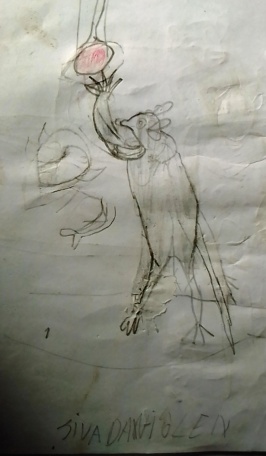
For the night walks, Pascal describes the incredible diversity of wildlife they saw. No wonder the children love them! “At 6:30 pm we start for the night walk. In the beginning we saw the big nosed chameleon when we find that I explain how can find the tiny chameleon at night to my students so when we use the torch chameleon’s color like white and after 30 second he turn brown and excellent camouflage. We continue after 10 meters we find the Masoala sportive lemur, and then brown mouse lemur, giant leaf-tailed gecko, Boophis frog, and big nosed chameleon. We climb up of little hill, one Masoala sportive lemur again set on the tree trunk, and after we start go back home, on the way two students find the tiny big nosed chameleon that the kids learn and know how can they can find even it is very high on the stick.” Good sightings by the students!
Learning to search out small details in the dark by looking for shapes and eye shine with their torches (flashlights), they saw a huge scorpion and a tree boa, and the eye-shine of a Masoala woolly lemur. After a long search they saw two greater dwarf lemurs feeding on the Ravenal tree’s nectar, providing an opportunity for Pascal to explain how the greater dwarf lemur pollinates the Ravenala tree (Traveller’s Palm, the symbol of Madagascar).
The children are so excited about the learning opportunities and experiencing the forest at night that they join in even if they don’t have shoes or flashlights. We will be providing Pascal with funds to purchase a large number of solar powered flashlights so that every child is able to participate safely. You can help us with these efforts by donating on our Support Us page.
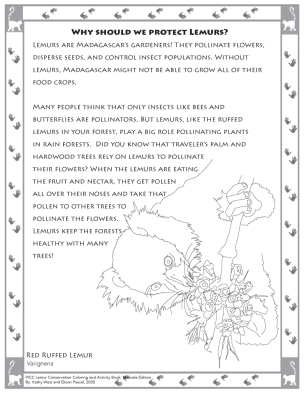
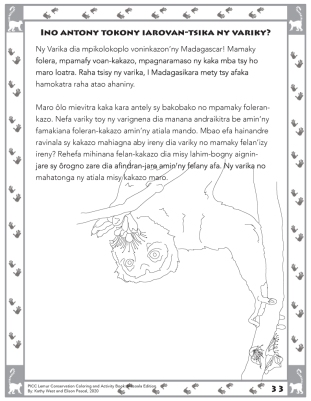
Lemurs are important pollinators of many trees used by both lemurs and people. Pages 32 – 33 in the Lemur Conservation Coloring and Activity Book: Masoala edition, 2020.
On especially rainy days, Pascal had the students walk around the forests and fields surrounding their village and share traditional animal tales. They had fun building on each other’s knowledge of the animal folklore – like why the crested drongo became the birds’ queen, and why the flying fox sleeps with its head turned downward. We’ll have to ask Pascal for the answers to those riddles!
Passing by another, more remote village on his way home from Ambodiforaha, Pascal met with the teachers and village leaders of Marofototra and was asked to come back and teach a mini-PICC session to their 60 children.
Marofototra, Madagascar. Pascal returned to the village of Marofototra in early April with notebooks, PICC worksheets and colored pencils. Even though the students were on school holiday and some had traveled to another area, they were so excited about the opportunity that they walked long distances each day, arriving at midday to attend Pascal’s classes.
In this remote part of the Masoala peninsula there are no tourist paths through the forest, only local trails. However, Pascal is a skilled wildlife guide and the children already knew how to move through the forest, so they were able to take these trails even in the heavy rains and still find lemurs and “lots and lots of frogs.”
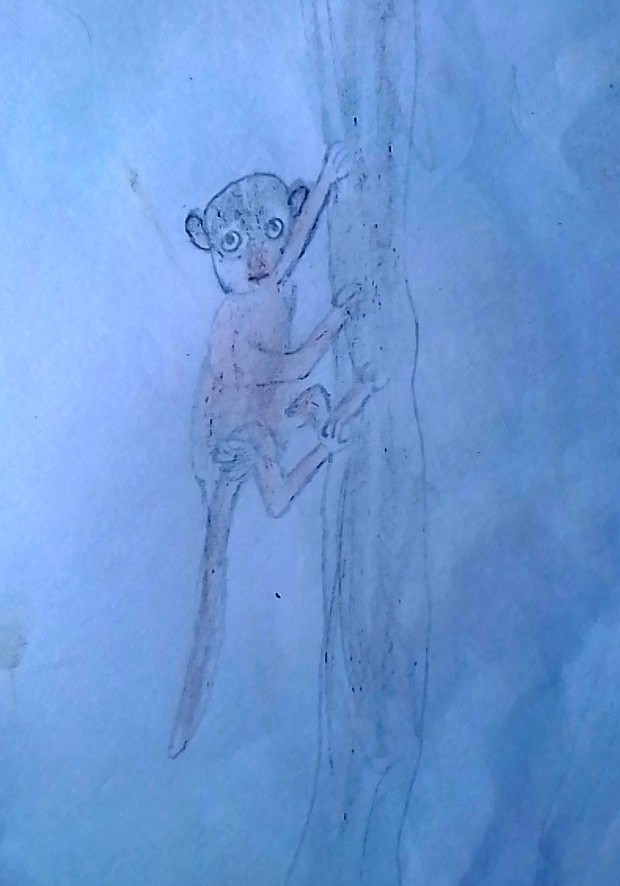
Masoala sportive lemur. Drawing by Marofototra student, PICC Session April 2021 
A fosa hunting a lemur. Predation in action! Drawing by Marofototra student, PICC Session April 2021 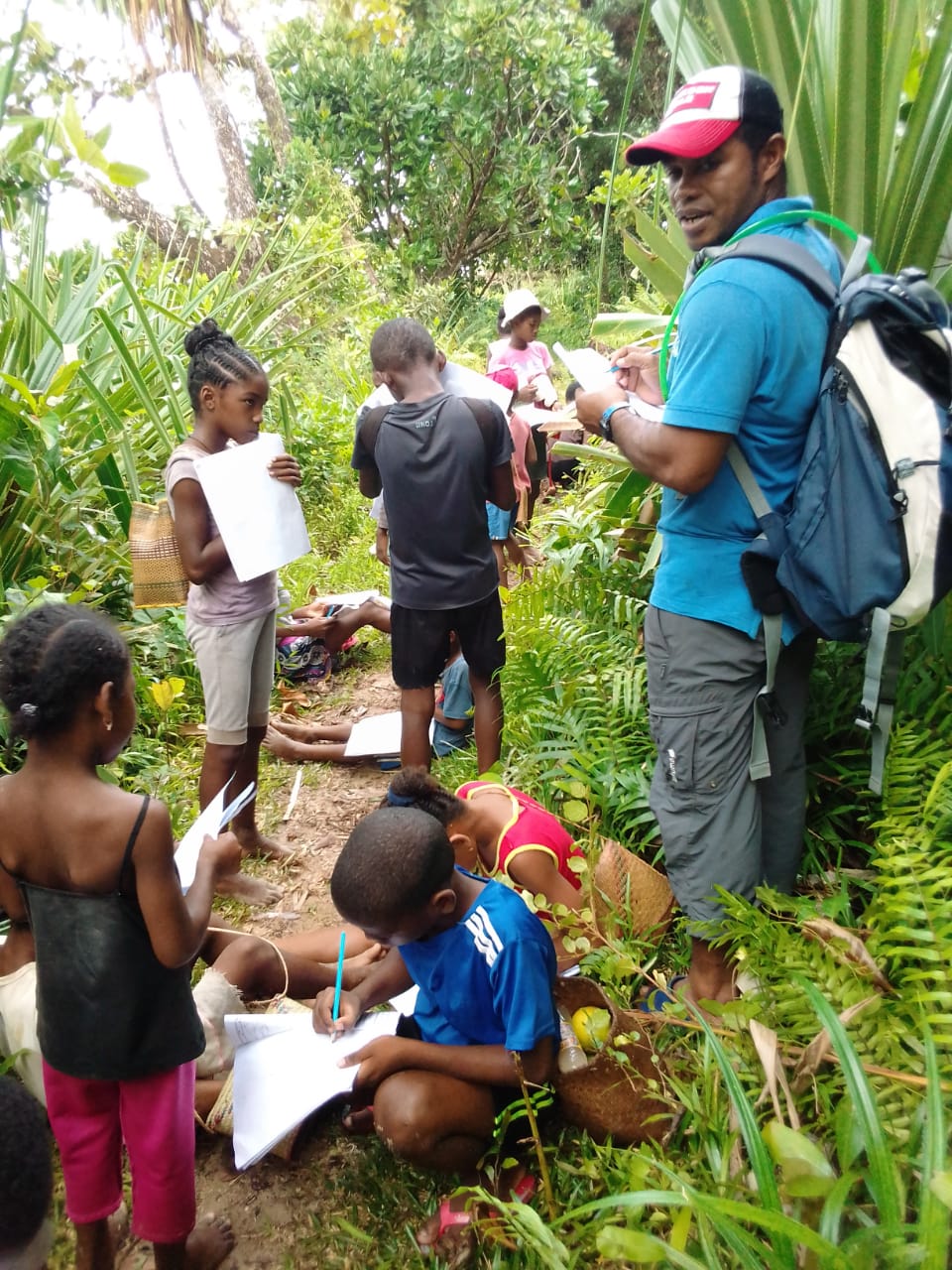
Marofototra students with Pascal Elison, PICC Session April 2021 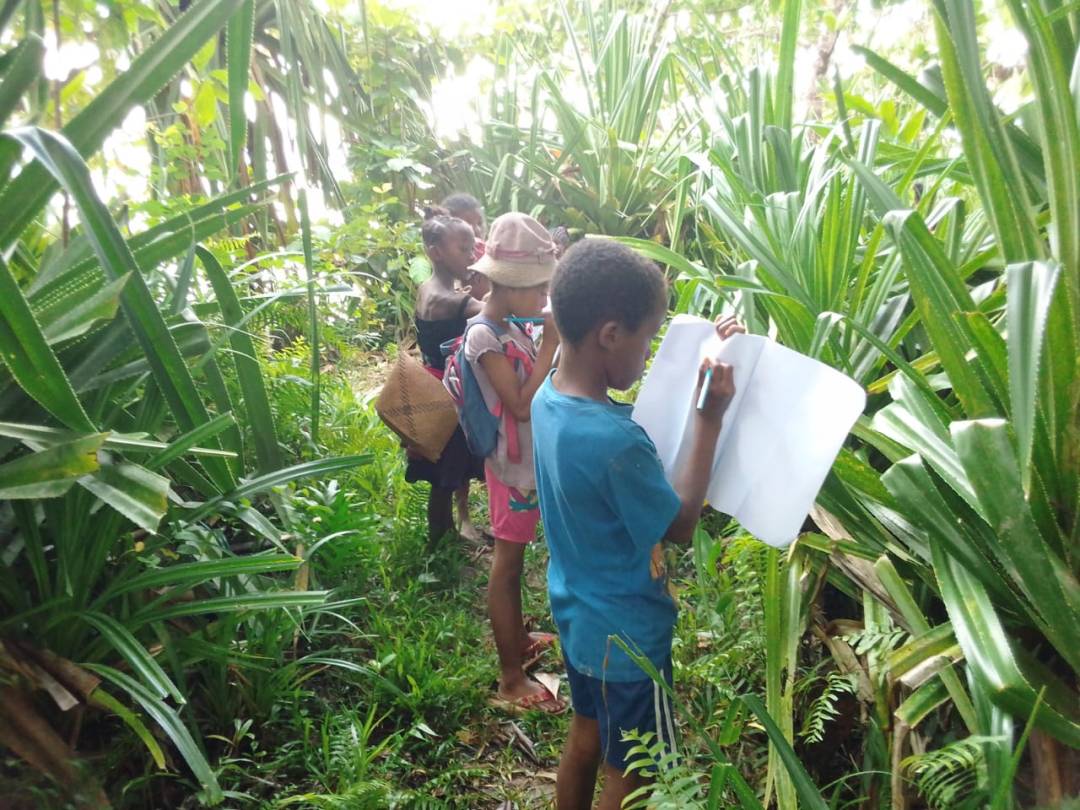
Marofototra students drawing their local plants and animals. PICC Session April 2021. Photo by Pascal Elison.
On another ever-popular night walk the children found 3 species of endangered lemurs (IUCN Redlist– Endangered and decreasing): the Masoala (Moore’s) woolly lemur, the (Masoala) Scott’s sportive lemur, and the hairy-eared dwarf lemur. They also saw a little, quick-moving mouse lemur and a bamboo lemur. Seeing the bamboo lemur gave Pascal a chance to teach the children about the amazing ability of these lemurs to detoxify the cyanide in bamboo shoots and take advantage of this food source that other animals can’t use. He was sure to emphasize how the lemurs can convert cyanide and safely eat bamboo, but people can’t!
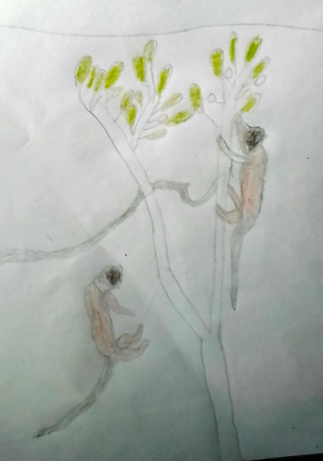
Watching the lemurs feed on fruit, Pascal explained to the children how the lemurs eat the fruit and then poop out the seeds, providing the seedling with nutrients to grow a new, healthy tree more quickly. Just like people grow bananas, mangos, oranges, and other fruits, he talked about how these lemurs are growing their own fruit trees for their future enjoyment.
After spending two weeks in each village of Marofototra and Ambodiforaha teaching the children and leading them on hikes, Pascal finished his classes by expanding the outreach to the families. Together with the students, he talked to the parents to share what they had learned and also to engage the families in the conservation message. Happily, many of the students are telling us that they have convinced their parents that the forests and lemurs need to be protected and they are continuing to learn and develop their drawing and storytelling skills.
It is so satisfying to hear that after the PICC session in Ambodiforaha, the children were thrilled to have a critically endangered red ruffed lemur (Varecia rubra) come into their village, be able to identify it, and to share that excitement with their parents. We are proud of what Pascal and the students have accomplished in their communities!
Update April 12, 2021. Sadly, the coronavirus pandemic has now reached the more remote areas of Madagascar and the schools are closed, along with all of the transportation into the area. This means the children have no formal school but can continue to learn from the PICC materials. They have colored the entire activity book and have hung the images on the walls in their houses so that they see it every day and teach their parents what they’ve learned about the lemurs, the forests and conservation. (Download your own copy of the book here.)
At the time of Pascal’s visits, these communities were free of coronavirus so the children and Pascal are pictured without masks.

Lemur feeding on fruit. Drawing by Marofototra student, PICC Session April 2021 
Marofototra students finding a lemur in the canopy. PICC Session April 2021. Photo by Pascal Elison 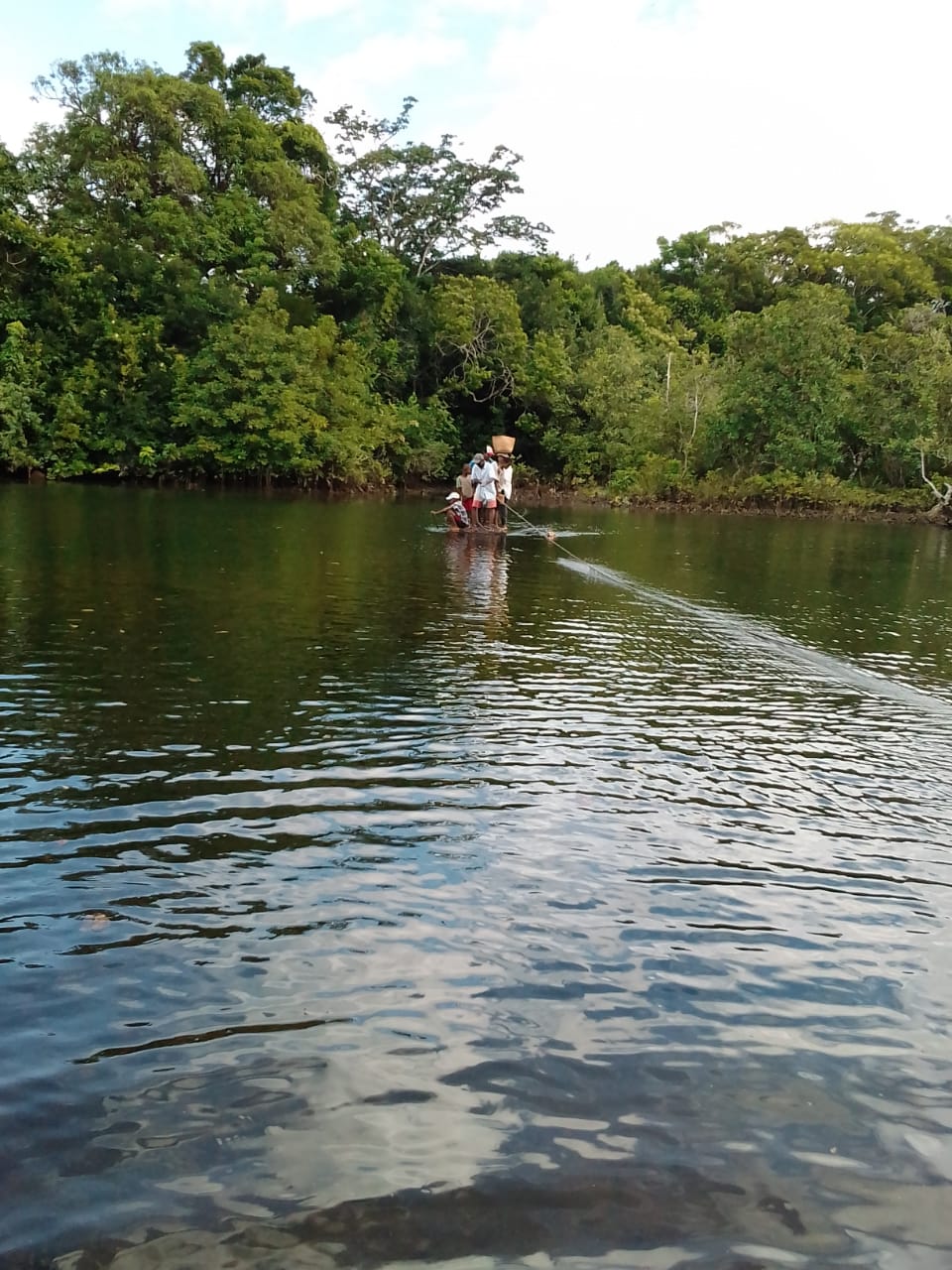
A special thank you to our supporters who have provided funds to purchase the learning materials and pay Pascal a salary!
Conservation Coloring Book: Masoala Edition
A new edition of the Lemur Conservation Coloring and Activity Book was just released for the PICC project in Masoala National Park, NE Madagascar. It was co-authored by Kathy West and Pascal Elison, translated to the local Malagasy dialect, and customized for the local ecosystems, communities and conservation solutions. Cover art was done by Ambodiforaha students from their PICC session in June 2020. Download a free copy here!
Custom-tailored conservation coloring and activity books are an effective method to engage and inform children and adults in topics of local biodiversity, ecosystems, and conservation issues and solutions.
The first book of the primate conservation coloring book series was written and illustrated for the southeastern habitats of Madagascar, co-authored by Kathy West with lemur biologist Dr. Amber Walker-Bolton, University of Toronto, Scarborough, and published in English and Malagasy in 2018. The illustrations (by Kathy West), activities and text provide information on lemur behavior, biology and natural history, and present conservation issues and solutions. Dr. Walker-Bolton has provided a copy of the book to teachers and students in Madagascar (2018) and Kenya (2019), with great excitement from the classes, especially on owning their very own book, a first for many of the children (see photos below). Download a free copy of the Berenty edition (2019) RBC Lemur Conservation Colouring and Activity Book.

A Program Update From Our Director, Kathy West
For the safety of the Malagasy people, the lemurs, and the PICC staff, the onsite session of the PICC project will be postponed until it can resume safely. Meanwhile, we have developed a number of exciting and creative online and on-site Madagascar projects to take place this summer.
Experienced and knowledgeable Malagasy guide, Pascal Elison, and Director Kathy West have developed teaching materials and arrangements for a PICC session in the Ambodiforaha village next to the Masoala National Park. Pascal began teaching the session to 28 children this week. Pascal (and his talented artist son) will provide the Malagasy children with information about their local lemurs and biodiversity, conservation awareness, and skills to share their new knowledge.
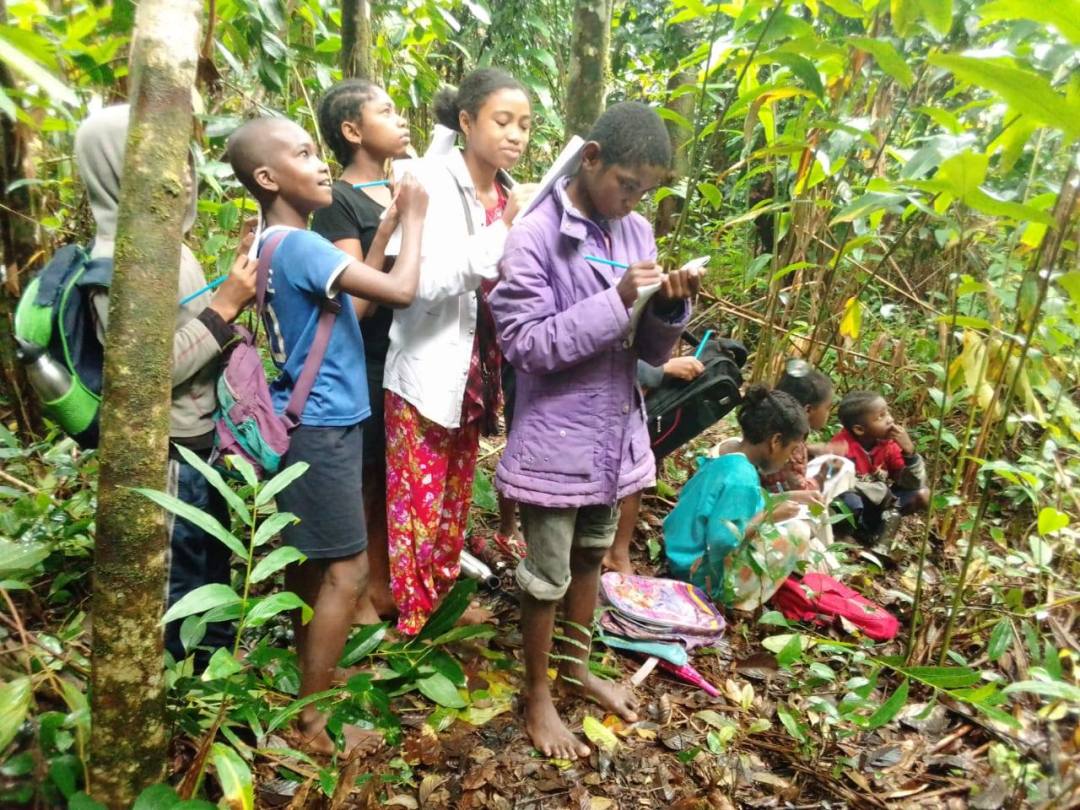
Blank notebooks, pencils and colored pencils have been purchased, worksheets have been developed and printed, and lunch snacks have been gathered for the 28 school-aged children in the village. Pascal is teaching them through discussions in the village, demonstrations of field sketching and scientific drawing, and guided walks to the forest and beaches to visit the lemurs and experience the forest with their new knowledge, practicing their drawing and note-taking along the way. Pascal is even taking them on a night hike to see the night lemurs. Joining them is a local teacher who will be provided with the teaching materials to continue exploring these lessons. The children’s drawings and stories will be shared on the PICC website soon.
PICC is also supporting the Malagasy people during the pandemic. Pascal is a professional guide and has had to cancel all of his clients for the unforeseeable future. Madagascar’s borders are closed and its internal transportation is locked down to prevent the spread of COVID-19.
The Ambodiforaha village relies on the work that local lodges and tourism provides. The PICC program truly appreciates Pascal’s efforts and time and is paying his wages for his worked time and also missed opportunities for this summer’s canceled PICC session.
Please contact us with any questions about how we are finding ways to continue with our outreach efforts and support the local communities during these challenging times.
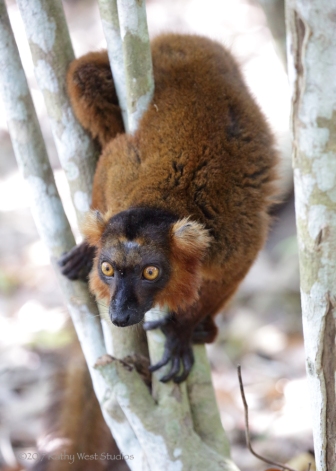
PICC Student Images Now Available in PICC-SFFP Gallery
Head over to the Student Gallery page on our website to check out a selection of images that Lelydorp students in the PICC–SFFP project made at the Tropical Butterfly Center and Peperpot Nature Park on October 8 –11, 2018.
You can also view the Lelydorp students with their photographs here in the Student Portrait Gallery. They were all so proud of their success and the images they created in the PICC-SFFP project, October 2018.
PICC Pilot Project Successfully Launched in Suriname Community of Lelydorp
Walk in a lowland forest in Suriname and you’ll hear an extraordinary symphony of birds, monkeys and insects. Orchids drape from the branches, dragonflies lite on branches, and colorful jacamar, woodstar and tanager birds flit in the tangled shade. Ancient lianas form twisted patterns in their loops and curves down to the dense understory which conceals jaguars and pumas, and their prey of agouti, deer and pecari. Groups of capuchin and squirrel monkeys call close to the trail, feeding on insects and the flowers of the kofimama tree (so named for the protective shade that it provided to the coffee plants in the original plantations from the 1700s).
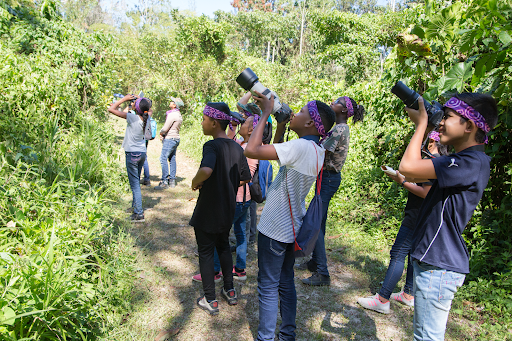
Protecting these forests and their biodiversity against increasing pressure from logging and land clearing for agriculture is the focus of Dr. Marilyn Norconk (Kent State University, Ohio, and Anton De Kom University, Suriname). In 2012, Marilyn and Sylvia Atsalis (U. Chicago) initiated a Fulbright Research program called Suriname Forest Fragment Project (SFFP). She works with local conservation biologists Chantal Landberg and Arioené Vreedzaam and is implementing a community education program to instill the value of maintaining existing forests and reestablishing corridors between forest fragments, cementing community bonds to forest fragments and helping residents develop a sustainable forest protection program. Educating children in these rural communities is a critical step in developing a sustainable culture of conservation and appreciation for the forests and animals.
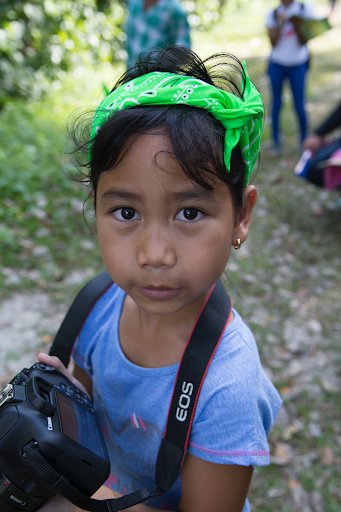
The PICC program (Photography Inspiring Children in Conservation) was founded in 2016 by conservation photographer Kathy West who envisioned the link between learning the skills of wildlife photography and effectively engaging children with the ecosystems surrounding their homes. Through photography and developing a field journal, the children learn to truly look at the tiniest insect or flower, understand animal lives and habitat needs, gain an appreciation for the interaction of animals with their environment, and learn to care about protecting these ecosystems. Ultimately we want to inspire the children to become lifelong learners and conservation leaders within their communities by providing them with skills and knowledge through the arts of photography, illustrations and writing.
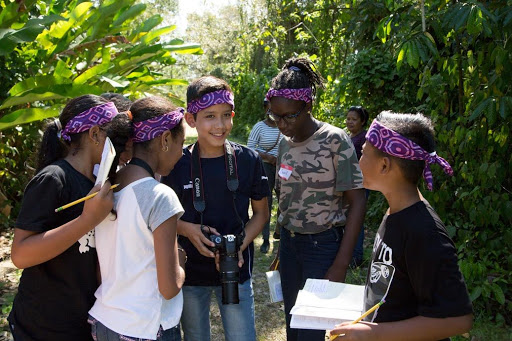
Collaborating with Dr. Marilyn Norconk and relying on her extensive ecological knowledge and established community relationships, Kathy and Marilyn worked with thirty-two 9 and 10 year old students from the rural Surinamese village of Lelydorp to teach them about their local flora, fauna and forest ecosystems from 08 October to 13 October, 2018. The children and their teachers were thrilled to explore a Tropical Butterfly Center and the forested area of Peperpot Nature Park, while developing skills in photography, field journals and using binoculars.
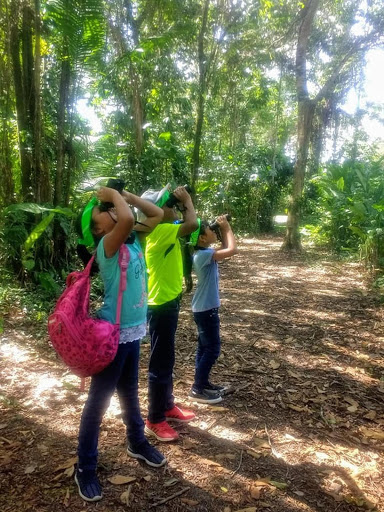
The students made countless discoveries in the forest and recorded their findings with notes and sketches in their journals. Seeing the excitement in their faces as they made a new discovery or proudly shared the camera screen of their image was so rewarding to Kathy, Marilyn and their teachers.
Following the field trips, the children continued to develop the information and drawings in their journals. Many added pressed plants, expanded observations, and made complex and colorful drawings of the biodiversity that they had seen on our field outings. Their field journals reflected a deep understanding of the plants and animals, and the children talked about continuing to use their journals in their neighborhoods to make more discoveries, sketches and notes about what they learned.
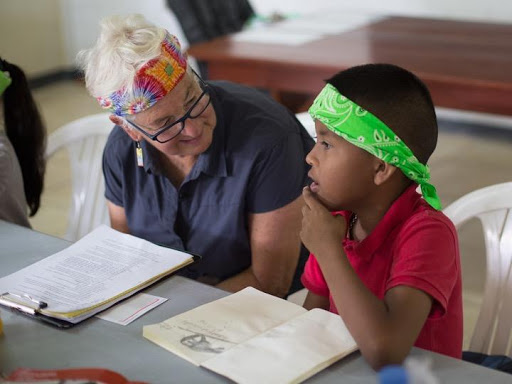
The children were incredibly successful in capturing gorgeous images using Canon DSLR cameras with a 300mm telephoto zoom lens. Kathy selected a photograph from each child’s images to enlarge, print and laminate.

On the last day of the workshop the children arrived early in the morning to share their journals and to see and describe their photos. They were beyond excited to see their printed photographs and to help to hang it with a gallery style placard describing the image, their thoughts and the discoveries they had made by looking closely at the enlarged print.
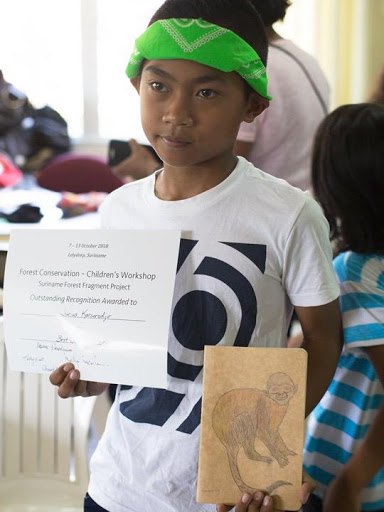
After sharing a delicious Surinamese lunch, the children, TAs and program leaders welcomed the parents and siblings to their gallery display. Each child stood next to their print and excitedly spoke of their experience and accomplishments.
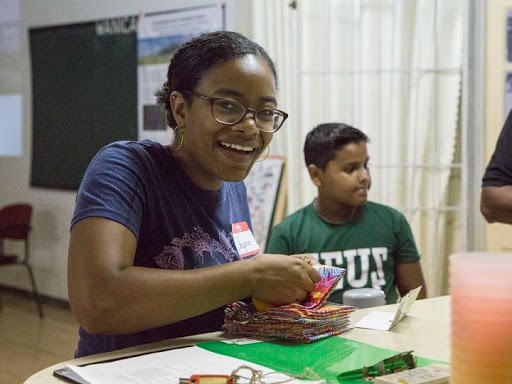
The children talked about bringing their parents to the nature areas and expressed excitement about continuing to work in their journals. We hope that we have instilled a lifelong appreciation and passion for protecting the forests, the animals and the ecosystems in their neighborhoods and their beautiful country of Suriname.
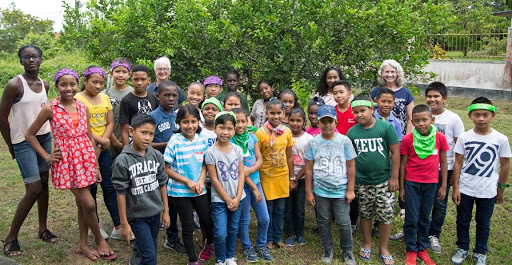
PICC is partially funded by a grant from the American Society of Primatologists Conservation Committee. To support future sessions planned for NE Madagascar in 2019, please visit our Support Us page and learn how you can help.
Don’t forget! You can keep up with us, find conservation inspiration and more by following us on Facebook, Instagram and Twitter.
